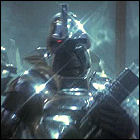 20th Century Fox files a lawsuit against Hollywood rival Universal Pictures over Universal’s upcoming made-for-TV science fiction saga Battlestar Galactica, which 20th Century Fox contends is a copy of its theatrical smash hit Star Wars. Specificially, the studio behind Star Wars claims that the television series infringes on the script for Star Wars, and requests an injunction to bring production to a halt and keep ABC from airing it. The first decision in the case won’t happen until 1980, by which time Battlestar Galactica will already have ended its TV run.
20th Century Fox files a lawsuit against Hollywood rival Universal Pictures over Universal’s upcoming made-for-TV science fiction saga Battlestar Galactica, which 20th Century Fox contends is a copy of its theatrical smash hit Star Wars. Specificially, the studio behind Star Wars claims that the television series infringes on the script for Star Wars, and requests an injunction to bring production to a halt and keep ABC from airing it. The first decision in the case won’t happen until 1980, by which time Battlestar Galactica will already have ended its TV run.
More about Battlestar Galactica in the LogBook and theLogBook.com Store
Battlestar Galactica now streaming on Amazon Prime
![]()

 Following a communications blackout scare in April 1978, JPL uploads an autonomous command sequence to the Voyager 2 unmanned space probe, which would allow the spacecraft to carry out a self-guided mission to Jupiter and Saturn, the results of which would automatically be transmitted to Earth even if Voyager 2 can receive no further instructions from Earth. Due to the command storage limitations of Voyager 2’s onboard computer, this automatic backup mission plan makes no allowances for pictures of Jupiter, saving that capability for Saturn instead. In the event that Voyager 2 can no longer hear commands from Earth, the extended mission to Uranus and Neptune would be forfeited in favor of “minimum science return” from Jupiter and Saturn.
Following a communications blackout scare in April 1978, JPL uploads an autonomous command sequence to the Voyager 2 unmanned space probe, which would allow the spacecraft to carry out a self-guided mission to Jupiter and Saturn, the results of which would automatically be transmitted to Earth even if Voyager 2 can receive no further instructions from Earth. Due to the command storage limitations of Voyager 2’s onboard computer, this automatic backup mission plan makes no allowances for pictures of Jupiter, saving that capability for Saturn instead. In the event that Voyager 2 can no longer hear commands from Earth, the extended mission to Uranus and Neptune would be forfeited in favor of “minimum science return” from Jupiter and Saturn. Atari releases the
Atari releases the 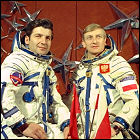 Soyuz 30 lifts off en route to a brief visit with the crew of space station Salyut 6. This is the second manned Interkosmos mission, with cosmonaut Pyotr Klimuk and the first Polish cosmonaut, Mirosław Hermaszewski, aboard. They dock at Salyut 6 after two days in orbit, and spend a total of eight days in space. Though some joint experiments are conducted among the four occupants of the station, the Soyuz 30 crew frequently has to perform experiments in its own Soyuz vehicle to avoid getting in the station crew’s way, and the mission is kept short to free up the second docking port for a Progress unmanned supply vehicle launched four days after Soyuz 30 returns to Earth.
Soyuz 30 lifts off en route to a brief visit with the crew of space station Salyut 6. This is the second manned Interkosmos mission, with cosmonaut Pyotr Klimuk and the first Polish cosmonaut, Mirosław Hermaszewski, aboard. They dock at Salyut 6 after two days in orbit, and spend a total of eight days in space. Though some joint experiments are conducted among the four occupants of the station, the Soyuz 30 crew frequently has to perform experiments in its own Soyuz vehicle to avoid getting in the station crew’s way, and the mission is kept short to free up the second docking port for a Progress unmanned supply vehicle launched four days after Soyuz 30 returns to Earth.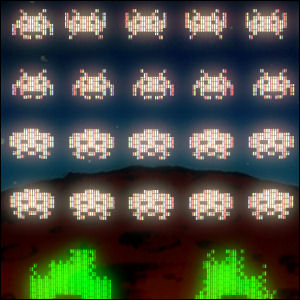 After its introduction in June in Japan,
After its introduction in June in Japan,  The
The 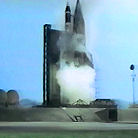 The
The 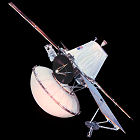 Less than two years after arriving at Mars, the “mothership” orbiter that delivered the
Less than two years after arriving at Mars, the “mothership” orbiter that delivered the  The
The 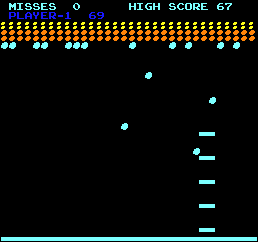 Atari releases the arcade game
Atari releases the arcade game  The
The 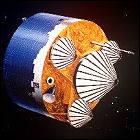 Trailing its supporting orbiter by several months, the Pioneer Venus Multiprobe – also known as Pioneer 13 – lifts off en route to deposit its payload of four atmospheric entry probes designed to measure the planet’s inhospitable, poisonous atmosphere. Following the launch of those probes, the Multiprobe carrier vehicle will then enter the atmosphere of Venus itself and take measurements, burning up before it ever reaches the surface.
Trailing its supporting orbiter by several months, the Pioneer Venus Multiprobe – also known as Pioneer 13 – lifts off en route to deposit its payload of four atmospheric entry probes designed to measure the planet’s inhospitable, poisonous atmosphere. Following the launch of those probes, the Multiprobe carrier vehicle will then enter the atmosphere of Venus itself and take measurements, burning up before it ever reaches the surface. The third in a series of three International Sun-Earth Explorer satellites, a joint effort between NASA and the European Space Agency, is launched aboard a Delta rocket from Cape Canaveral. Unlike the other ISEE satellites, ISEE-3 is intended to take up a “halo” orbit at the L1 LaGrangian point between the sun and Earth, the first man-made space vehicle to do so. There it will study the interaction between the solar wind and Earth’s own magnetosphere. Once its mission is completed in the early 1980s, it will be redirected and renamed to become the first Earth spacecraft to study a comet at close range.
The third in a series of three International Sun-Earth Explorer satellites, a joint effort between NASA and the European Space Agency, is launched aboard a Delta rocket from Cape Canaveral. Unlike the other ISEE satellites, ISEE-3 is intended to take up a “halo” orbit at the L1 LaGrangian point between the sun and Earth, the first man-made space vehicle to do so. There it will study the interaction between the solar wind and Earth’s own magnetosphere. Once its mission is completed in the early 1980s, it will be redirected and renamed to become the first Earth spacecraft to study a comet at close range. The
The  The Soviet Union’s Soyuz 31 mission to the Salyut 6 space station lifts off, with cosmonauts Valery Bykovsky and Sigmund Jahn (the first East German space traveler) aboard. The crews are segregated less than on previous Interkosmos flights, and the Soyuz 31 crew is in space for over a week. They leave their vehicle at Salyut 6 and return in the Soyuz 29 vehicle on September 3rd.
The Soviet Union’s Soyuz 31 mission to the Salyut 6 space station lifts off, with cosmonauts Valery Bykovsky and Sigmund Jahn (the first East German space traveler) aboard. The crews are segregated less than on previous Interkosmos flights, and the Soyuz 31 crew is in space for over a week. They leave their vehicle at Salyut 6 and return in the Soyuz 29 vehicle on September 3rd. The
The 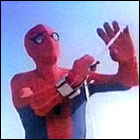 The
The  The
The 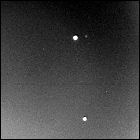 Voyager 1 emerges unharmed from what is considered the outer limit of the asteroid belt between Mars and Jupiter, having entered this 223,000,000-mile-wide zone of space in December 1977. Voyager 2 is expected to emerge similarly unscathed in late October 1978. NASA’s Pioneer 10 and 11 spacecraft had already demonstrated, in the early 1970s, that passage through the asteroid belt without mission-jeopardizing damage is possible. Both spacecraft are already imaging Jupiter from a distance of less than 180,000,000 miles, now meeting or exceeding the resolution of the best photos of Jupiter taken from Earth-based telescopes.
Voyager 1 emerges unharmed from what is considered the outer limit of the asteroid belt between Mars and Jupiter, having entered this 223,000,000-mile-wide zone of space in December 1977. Voyager 2 is expected to emerge similarly unscathed in late October 1978. NASA’s Pioneer 10 and 11 spacecraft had already demonstrated, in the early 1970s, that passage through the asteroid belt without mission-jeopardizing damage is possible. Both spacecraft are already imaging Jupiter from a distance of less than 180,000,000 miles, now meeting or exceeding the resolution of the best photos of Jupiter taken from Earth-based telescopes.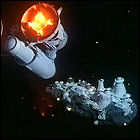 CBS airs the
CBS airs the 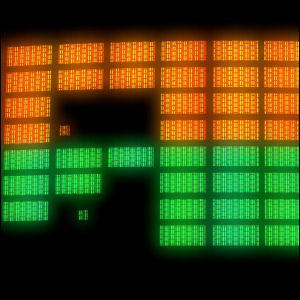 Atari releases
Atari releases 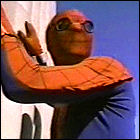 The
The 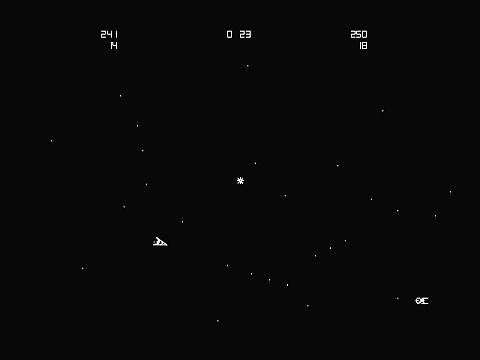 Cinematronics introduces the first vector graphics arcade game,
Cinematronics introduces the first vector graphics arcade game,  Still stinging from the business decision to not bid on the Star Wars toy rights, toy maker Mego International is first in line to get the toy license for Walt Disney Studios’ upcoming $20,000,000 science fiction movie The Black Hole, still in pre-production. The license includes action figures and vehicles, and banking on Star Wars levels of popularity, Mego has its products ready to go even before the movie hits theaters in late 1979 (only to see the movie flop in the US).
Still stinging from the business decision to not bid on the Star Wars toy rights, toy maker Mego International is first in line to get the toy license for Walt Disney Studios’ upcoming $20,000,000 science fiction movie The Black Hole, still in pre-production. The license includes action figures and vehicles, and banking on Star Wars levels of popularity, Mego has its products ready to go even before the movie hits theaters in late 1979 (only to see the movie flop in the US).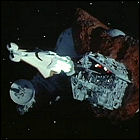 CBS airs the
CBS airs the 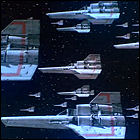 The
The 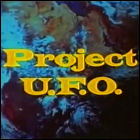 The 14th episode of Harold Jack Bloom’s sci-fi series Project UFO airs on NBC, portraying fictionalized investigations into what the show claims are actual cases from the U.S. Air Force’s Project Blue Book investigations. Edward Winter and Caskey Swaim star. Laurette Spang (Battlestar Galactica) guest stars in the second season premiere.
The 14th episode of Harold Jack Bloom’s sci-fi series Project UFO airs on NBC, portraying fictionalized investigations into what the show claims are actual cases from the U.S. Air Force’s Project Blue Book investigations. Edward Winter and Caskey Swaim star. Laurette Spang (Battlestar Galactica) guest stars in the second season premiere.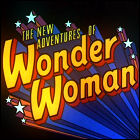 The 36th episode of Wonder Woman airs on CBS, starring Lynda Carter and Lyle Waggoner. Michael Lerner and Leif Garrett guest star in the third season opener.
The 36th episode of Wonder Woman airs on CBS, starring Lynda Carter and Lyle Waggoner. Michael Lerner and Leif Garrett guest star in the third season opener.